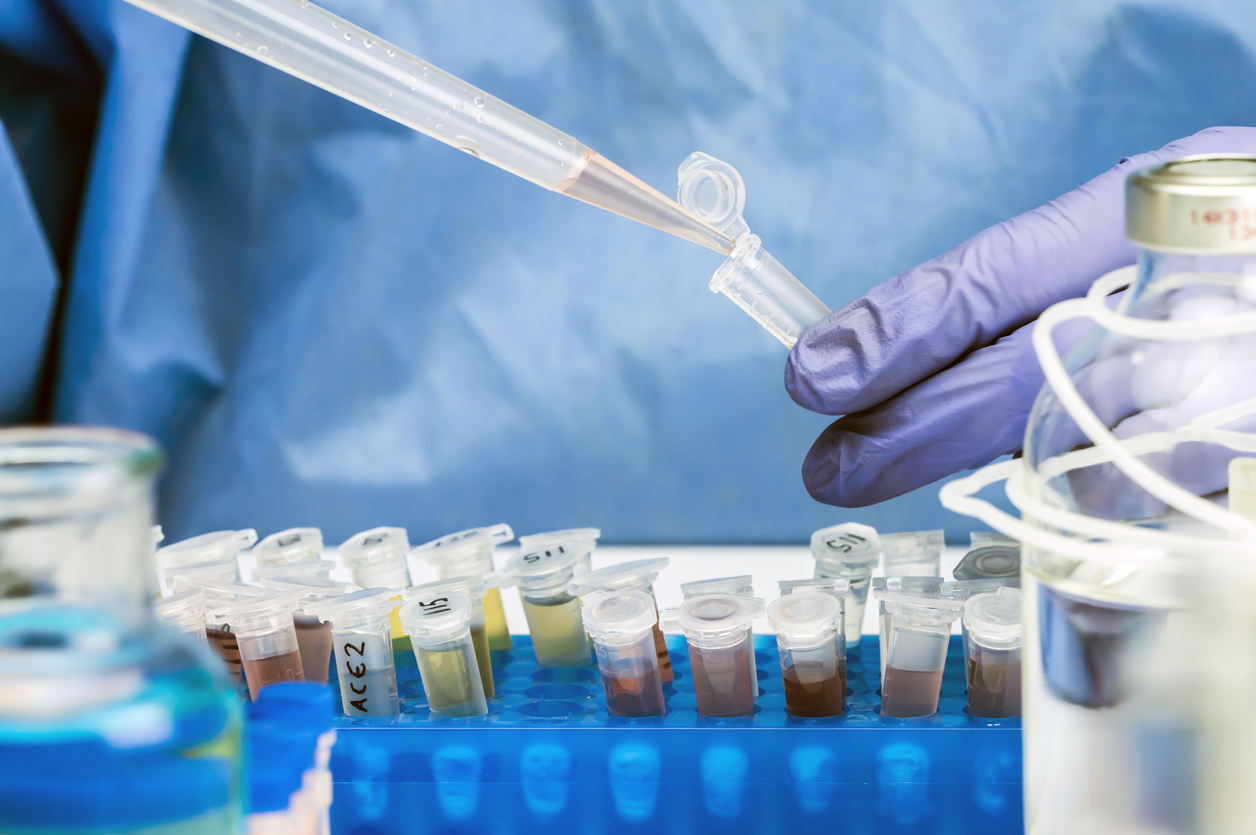RNA (ribonucleic acid) is found in all living things. It has several functions in cells including playing a role in transcription, translation, regulation and gene expression.
Researchers continue to find more types of RNA with different functions. For example in 2020, the Nobel Prize in Chemistry went to Dr.Doudna for developing the CRISPR/Cas9 RNA gene editing technology. Research, clinical, and industrial laboratories all purify RNA for experiments and patient testing purposes. In this article we will describe three popular types of RNA purification protocols, organic extraction, membrane filtration, adn magnetic bead separation, to help you understand the process as well as the pros and cons of each method.
Organic Extraction RNA purification protocol
- Sample is mixed with a phenol solution
- The sample is centrifuged to separate the sample (likely a lysis solution) into components
- RNA will be the upper phase of the phase separation that takes place during centrifugation
- RNA can be extracted from this upper phase by ethanol precipitation in a separate tube
Membrane Filtration RNA purification protocol
Filtration membranes for RNA purification protocols are made commonly commercially out of versions of silica/glass and put into small plastic spin columns. The steps for this method are as follows:
- Spray your working area with an RNase inhibitor solution.
- Lyse sample you will extract RNA from, don’t forget to use a lysis buffer that includes RNase inhibitors.
- Put lysis solution into a spin column with your filtration membrane in it. Centrifuge the liquid through.
- Do a few washes by putting a wash buffer in your column and centrifuging.
- Lastly, to elute your RNA you can add an elution buffer to your column and your sample can be collected into a tube under the membrane.
Magnetic Bead RNA purification protocol
Magnetic beads are considered the most simple and easy to use technique for RNA purification. For nucleic acid purification magnetic beads have a silica coating. In the presence of the right salts and solution conditions, nucleic acids will bind to the bead. It is possible to tailor the conditions favor RNA over DNA. Some protocols will have a DNA degradation step first using DNase. Here is a sample protocol for a magnetic bead RNA purification protocol.
- Spray your working area with an RNase inhibitor solution.
- Lyse sample you will extract RNA from, don’t forget to use a lysis buffer that includes RNase inhibitors.
- Optional: treat sample with a DNase to remove DNA contaminants from sample.
- Mix the lysed sample with magnetic beads resuspended in a binding buffer to allow nucleic acids to bind with magnetic beads.
- The solution can be placed in a magnetic separator to keep nucleic acid bound magnetic beads held to the container while solution is removed.
- The container with beads held by the magnetic separator undergoes wash steps using a wash buffer.
- The RNA is eluted from the beads by an elution buffer.
As you have read, there are several ways to do RNA purification. Different labs have their own preferences. The newest technique is the magnetic beads RNA purification protocol, and it has become popular as the more simple and efficient technique. You can read more in depth about how this technique works in this article: How does magentic bead separation work?. The scaling up of RNA purification has become increasingly important for vaccine development and clinical testing. Modern magnetic separators have made the optimization of these steps better by providing larger separators of up to 10 liters and the ability to monitor the separation process by computer.
Related news





